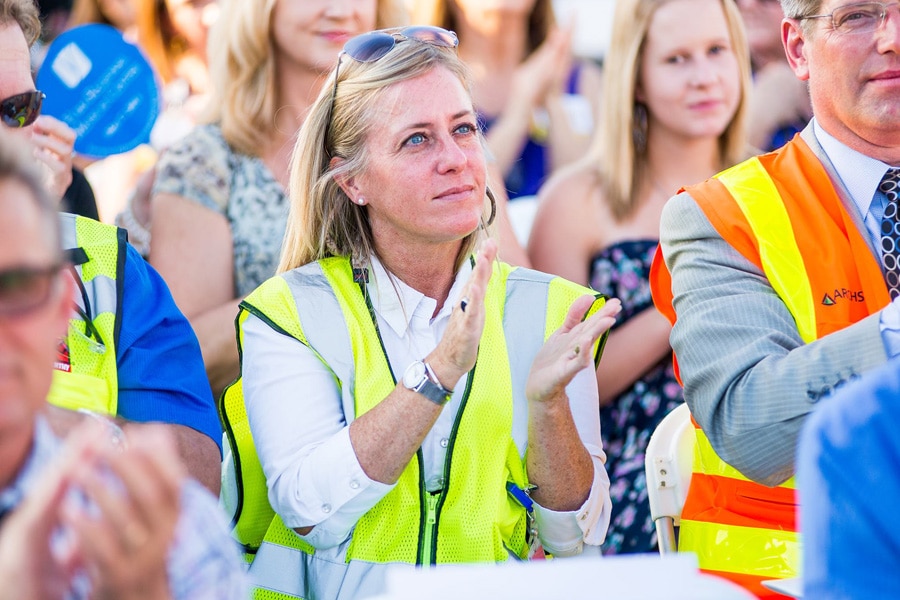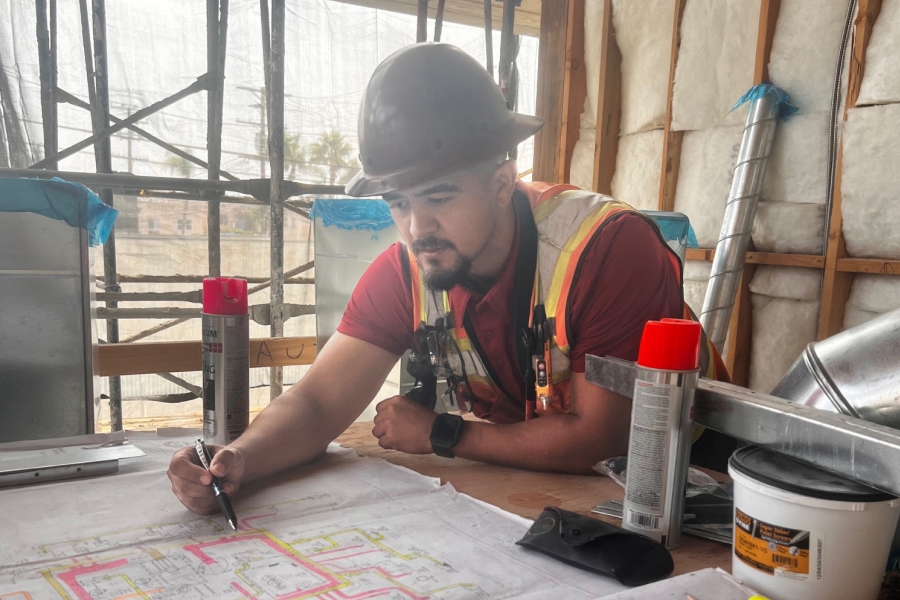Nicolle Wilkinson is working on what she believes will be her final project before retiring from a 30-year career as a licensed architect and certified construction manager.
An employee of CBRE, Wilkinson is the senior project manager consultant to the General Services Administration for the Calexico West Land Port of Entry project, California’s third busiest land port of entry (LPOE). Wilkinson leads the team of construction managers, inspectors and others tasked with monitoring construction progress, providing daily inspections, reviewing billing, as well as a host of other project oversight responsibilities.
Reflecting on her career, Wilkinson notes that, for almost 20 years (1994-2013), she was the only woman on a jobsite. Even now, she’s only one of two women within 400 miles of the United States-Mexico border who are licensed architects, and she’s the only female certified in construction management in the area.
Wilkinson’s gratified to see the growth of women in architecture and construction. She has regularly worked with women in a variety of engineer roles since the Yuma Regional Medical Center hired her to manage its $200 million expansion project in 2013. The past decade has been a period of tremendous growth for women in construction industry professions and trades.
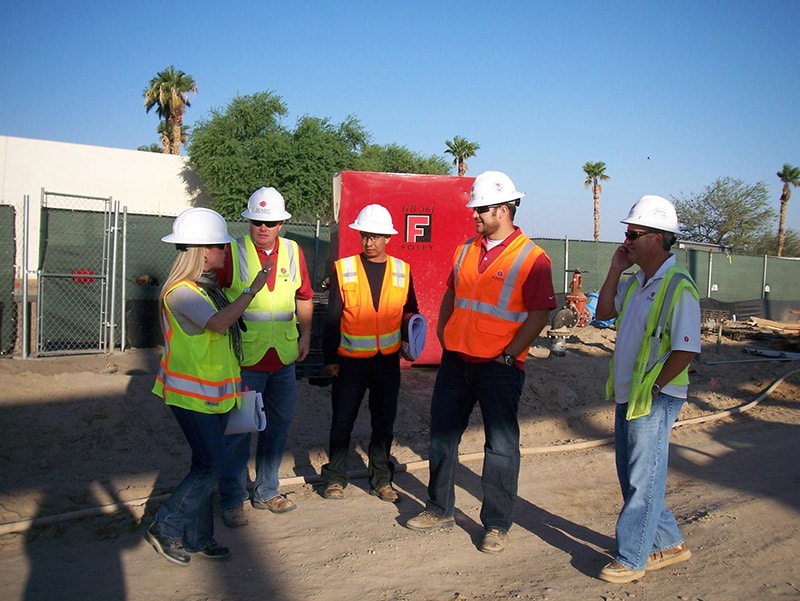
“It is extremely satisfying seeing the increased number of roles these women have available to them, and how quickly they are being promoted within their companies,” Wilkinson said. “Even more satisfying is seeing an increase in the number of women in the trades. Even things as seemingly simple as having a bigger variety of female-specific PPE have had a huge positive impact not only on safety but pride for women in the industry.”
From architect to construction manager
Wilkinson was motivated to study architecture because she decided it was the best way to make use of her high school geometry and algebra classes. She remembers sitting in these classes and asking, “Who uses this crap?” Instead of using that as an excuse to slack off, Wilkinson decided she wanted to put her math to work.
After graduating with a Bachelor of Architecture degree from the University of Kentucky in 1994, Wilkinson’s first job as an architect was with an equestrian architecture firm. She moved to Yuma, Arizona, in 1995 and joined a medium-sized civil engineering firm. By 1997, she was running its architectural division.
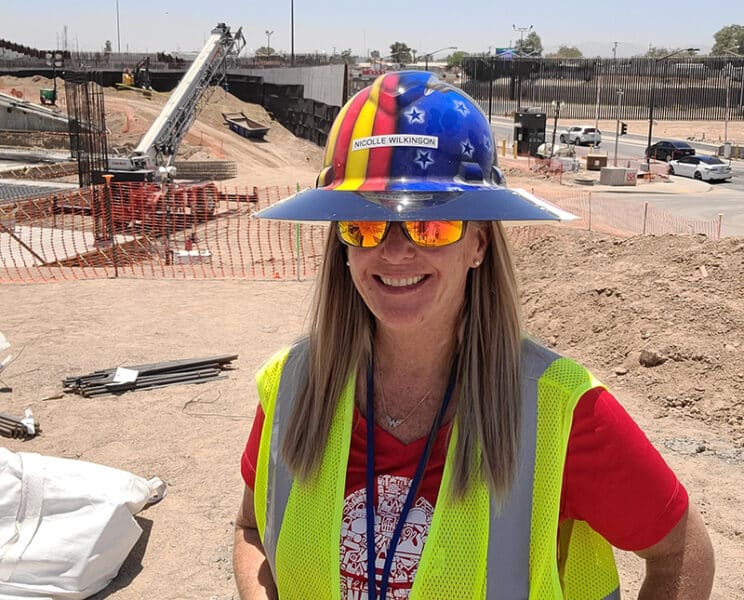
The company housed several construction services in-house. This broad exposure to construction-related fields was valuable in the redirection of Wilkinson’s career. “With so many in-house services all under one roof, I was able to experience a lot more than most of my peers,” she said. “This was where I found my passion and skill for project management and realized you don’t have to be the architect to have a big impact on a project.”
Wilkinson’s boss at the firm also had a significant impact on her transition from architect to construction manager. “I had a boss tell me in a meeting that if I ever left him, I was going to be a complete failure,” she said. “He says this right in front of my peers. It was one of the most humiliating, devastating things anybody could hear in their careers. And what it did was it made me quit.”
In 2006, Wilkinson worked as the architect on a jail expansion project in Yuma when she made her transition. She and the team were scheduled to make a presentation before the County Board of Supervisors the same day the board awarded a contract to manage a library bond program to an international company.

During the board session, Wilkinson learned that the company would have to open a local Yuma office to manage the expansion. That was all she needed to know. Wilkinson figured out who at the company was the right person to contact about the project, guessed their email address and sent them her resume. The company quickly hired her, making the $53 million library expansion project her first as a construction manager.
The experience of transitioning her career into a different role sparked Wilkinson’s commitment to this truth about building a career in construction: that people shouldn’t assume there’s only one path for them to reach their goals.
Forging her own way
“In hindsight, I wish I had known about construction management degrees in college,” Wilkinson said, “but they were not as abundant even back in the late 1980s and early 1990s as they are now. So architecture was how I got started.”
Still, Wilkinson firmly believes that people are in control of their own career path. “If you have an interest, don’t be afraid to switch jobs or careers,” she said. “It’s never too late. I was 36 when I quit architecture for construction management.”
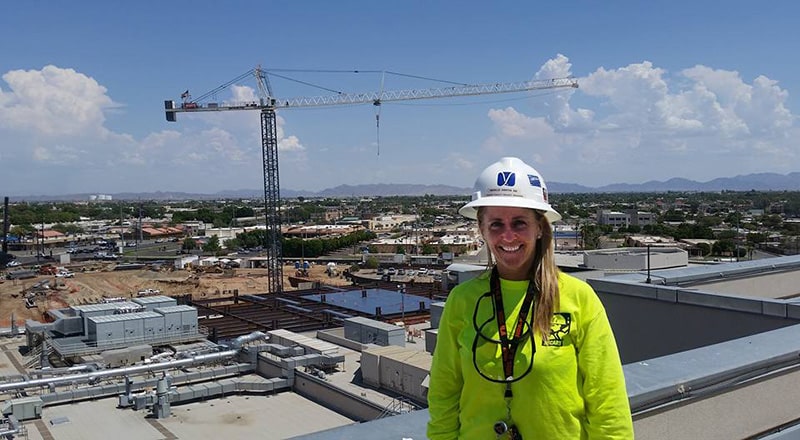
Wilkinson also believes that people should understand that they don’t need to go to college to enjoy professional success, even if they want a career in architecture, engineering or construction management. She acknowledges it will take someone longer to get the education, training and field experience to reach that goal, but it can be done.
Regardless of how one becomes licensed or certified for their construction industry role, Wilkinson credits relationship-building as vital to growing a satisfying career. “My mantra is you need to know the people you need to know before you need them … and before they need you,” she said. “Building relationships is one of the most important soft skills we can teach women to help them succeed in their careers.”
It certainly worked for Wilkinson. The Calexico West LPOE project is in phase 2A, which is scheduled to end in 2023. If the company is awarded Phase 2B, Wilkinson will continue working until the completion of that phase in 2025. After that comes retirement, where she said her new goal will be “sitting on my fat menopausal ass on a beach in Malta drinking red wine.”

